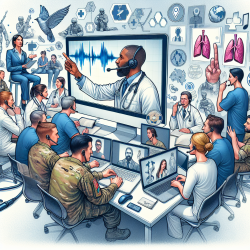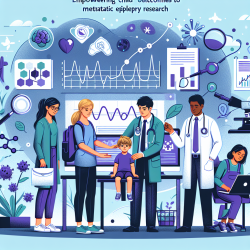Introduction
In the evolving landscape of healthcare, the Extension for Community Healthcare Outcomes (ECHO) model has emerged as a transformative approach to enhance healthcare delivery, particularly in underserved areas. Originating from the University of New Mexico, the ECHO model leverages telementoring to extend specialist knowledge to primary care providers, thereby improving patient outcomes. The recent study, "Extension for Community Healthcare Outcomes (ECHO) Telementoring in the Military: Where We Are Now, Opportunities and Challenges," provides valuable insights into the application of this model within military settings, offering lessons that can be extended to civilian healthcare, including online therapy services like those provided by TinyEYE.
Understanding the ECHO Model
The ECHO model employs a hub-and-spoke framework, where a central hub of specialists provides guidance to spoke sites consisting of primary care providers. This model facilitates a collaborative learning environment through videoconferencing, where real, de-identified cases are discussed. The model's effectiveness is underscored by its global reach, with 401 ECHO hubs across 49 states and 40 countries, addressing over 70 health-related conditions.
Key Findings from the Military ECHO Study
The military's adoption of the ECHO model has demonstrated significant growth and impact. From 2012 to 2019, the initiative expanded from one to seven programs, covering diverse topics such as pain management, diabetes, and traumatic brain injury (TBI). Notably, these programs have provided 51,769 continuing medical education (CME) hours to 3,575 attendees across 223 spoke sites.
The study highlights the model's success in reducing opioid prescriptions and improving diabetes management among military personnel. For instance, clinicians participating in ECHO programs reported a 23% reduction in new opioid prescriptions, compared to a 9% reduction in non-participating clinicians. Additionally, the Air Force Diabetes ECHO program significantly boosted clinicians' confidence and knowledge in managing complex diabetes cases.
Opportunities for Practitioners
Practitioners in civilian settings can leverage the ECHO model to enhance their skills and improve patient outcomes. Here are some actionable steps:
- Engage in ECHO Sessions: Participate in ECHO sessions relevant to your practice area to gain insights from specialists and peers.
- Utilize ECHO Resources: Access the curriculum and training materials developed for ECHO programs to enhance your clinical knowledge.
- Implement Best Practices: Apply the evidence-based practices discussed in ECHO sessions to your clinical work.
- Collaborate with Peers: Use the ECHO platform to build a network of peers for ongoing support and knowledge sharing.
Encouraging Further Research
The success of the ECHO model in military settings suggests potential for broader applications. Practitioners are encouraged to explore further research opportunities to adapt and implement the model in diverse healthcare environments, including speech language pathology and online therapy services.
To read the original research paper, please follow this link: Extension for Community Healthcare Outcomes (ECHO) Telementoring in the Military: Where We Are Now, Opportunities and Challenges.










